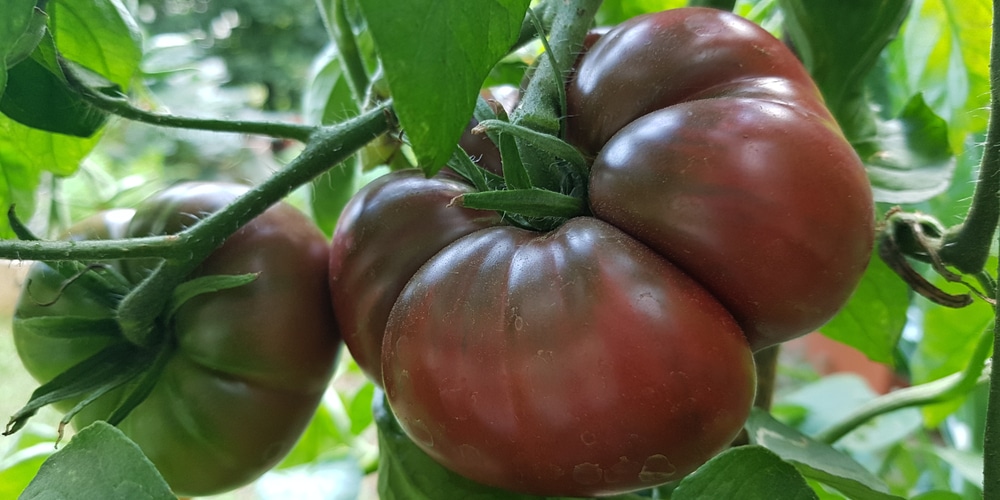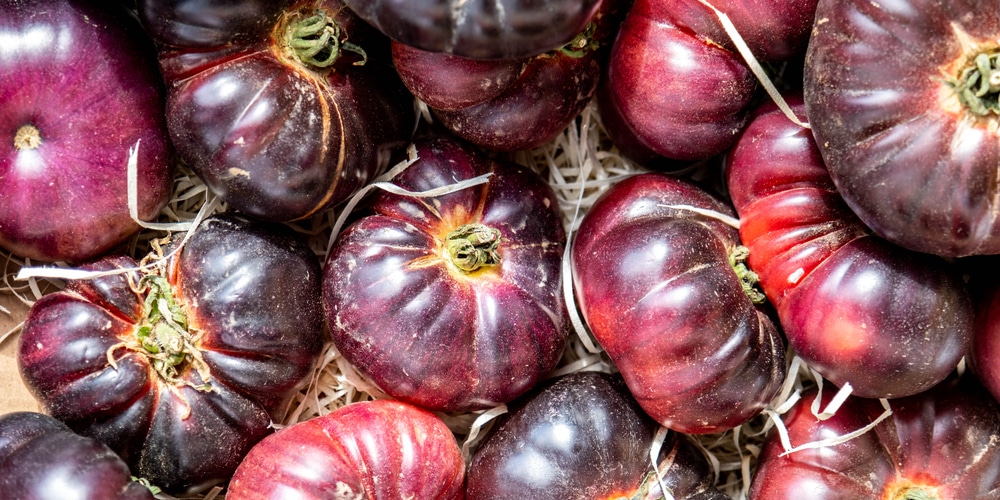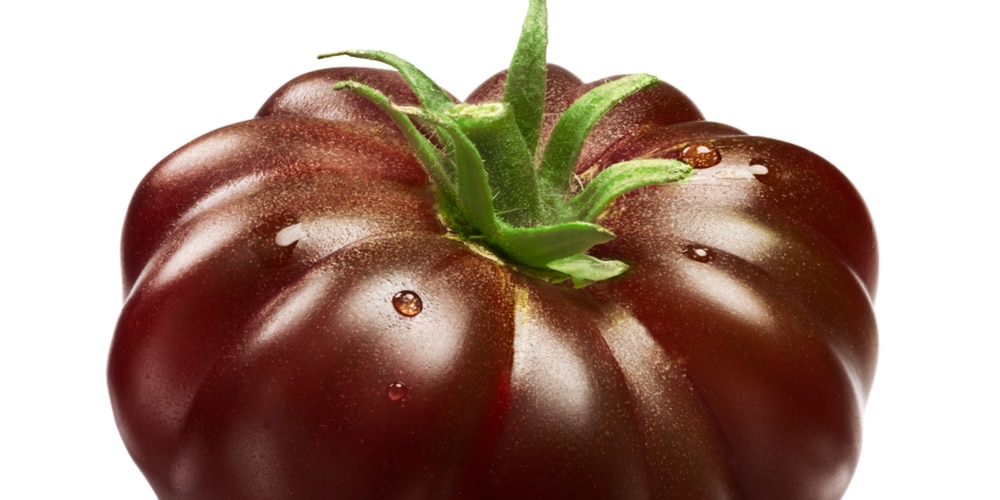Black Krim and Cherokee Purple tomatoes are two of the most flavorful varieties of tomatoes available. They are both heirloom tomatoes that look pretty similar, but some differences exist between them. Let’s compare black Krim vs Cherokee purple tomatoes. We’ll help you decide which variety to grow this season!
What are Black Krim tomatoes?

Black Krim tomatoes are an heirloom variety that originated in Russia. These tomatoes are known for their dark purple color and can appear almost black. They have a rich, sweet flavor and are perfect for salads or preserving.
Black Krim tomatoes typically grow to a medium-sized size and have a rounded shape. They measure about 3 or 4 inches across and weigh 8oz on average.
What are Cherokee Purple tomatoes?
Cherokee Purple tomatoes are another popular heirloom variety that originated in the United States. These tomatoes are unique for their dark, reddish-purple color with dark green streaks. They have a rich, tangy flavor which is excellent for salads or sandwiches.
The Cherokee purple is a medium to large-sized tomato that’s similar in shape to a beef stake tomato. They have an elongated, slightly flattened shape, measure approximately 3.5 inches in height, and are about 5 inches wide. The fruits weigh, on average, 13oz.
Black Krim vs Cherokee Purple Tomatoes: similarities
Both Black Krim and Cherokee Purple tomatoes are heirloom varieties known for their rich, sweet flavor. They also share a similar appearance, with dark purple skin and a variegated pattern.
Both the black Krim and Cherokee tomatoes grow on plants that are similar in size. The plants grow between three and four feet in height and can spread up to two feet.
Black Krim vs Cherokee Purple Tomatoes: differences
While Black Krim and Cherokee Purple tomatoes share some similarities, they also have some key differences. For example, Black Krim tomatoes are typically smaller than Cherokee Purple tomatoes, and their flavor tends to be a bit sweeter.
Additionally, Black Krim tomatoes tend to have a more globe-like shape, while Cherokee Purple tomatoes are slightly flattened.
The main way to tell these two types of tomatoes apart is to look at the skin around the tomato’s stalk. The black Krim tomato has yellow skin in this area, while the Cherokee purple has green skin.
Another way to tell these tomatoes apart is to look at the plant’s shape and the foliage’s color. Although the plants are roughly the same size, the black Krim tends to have a more sprawling growth habit and looks messier. It also has slightly darker colored leaves than the average tomato plant.
Taste
These two varieties of tomatoes are grown for their delicious flavor and are a lot tastier than store-bought tomatoes. The Cherokee purple tomatoes is usually eaten raw and has a rich smoky flavor but is also quite sweet. The black trim is less sweet and is usually used in many recipes and salads. It is generally eaten cooked and raw, while most people don’t cook with the Cherokee purple.
Harvest
Both the black Krim and Cherokee purple tomatoes are easy to grow, and their care needs are very similar. However, there is a slight difference in the time it takes for the tomatoes to grow.
Cherokee purple tomatoes can be harvested about 80 days after planting compared to just 70 days for the black Krim tomato. Be careful not to leave the Cherokee purple tomato on the vine for too long, or it may split.
After harvesting, you can put these two varieties of tomatoes into a paper bag, where they can be stored in a fridge or cool pantry for up to two weeks.
Conclusion
Overall, both Black Krim and Cherokee Purple tomatoes offer delicious flavor and a unique appearance. If you’re looking for a flavorful heirloom tomato variety with dark purple skin, either of these varieties is worth trying.
When growing heirloom tomatoes, ensure that they are spaced at least one foot apart and water them generously. You can also add some mulch around the base of the plant to help keep moisture in and add nutrients to the soil.

